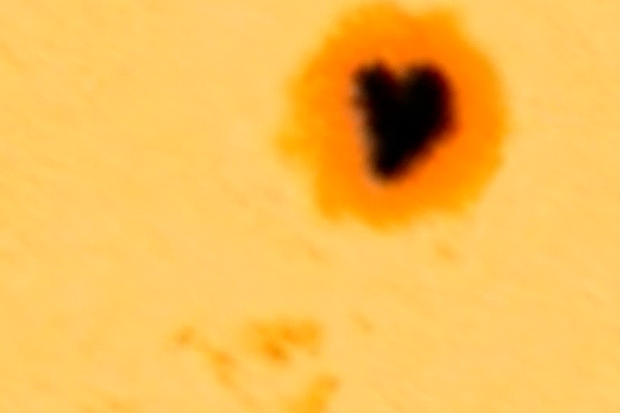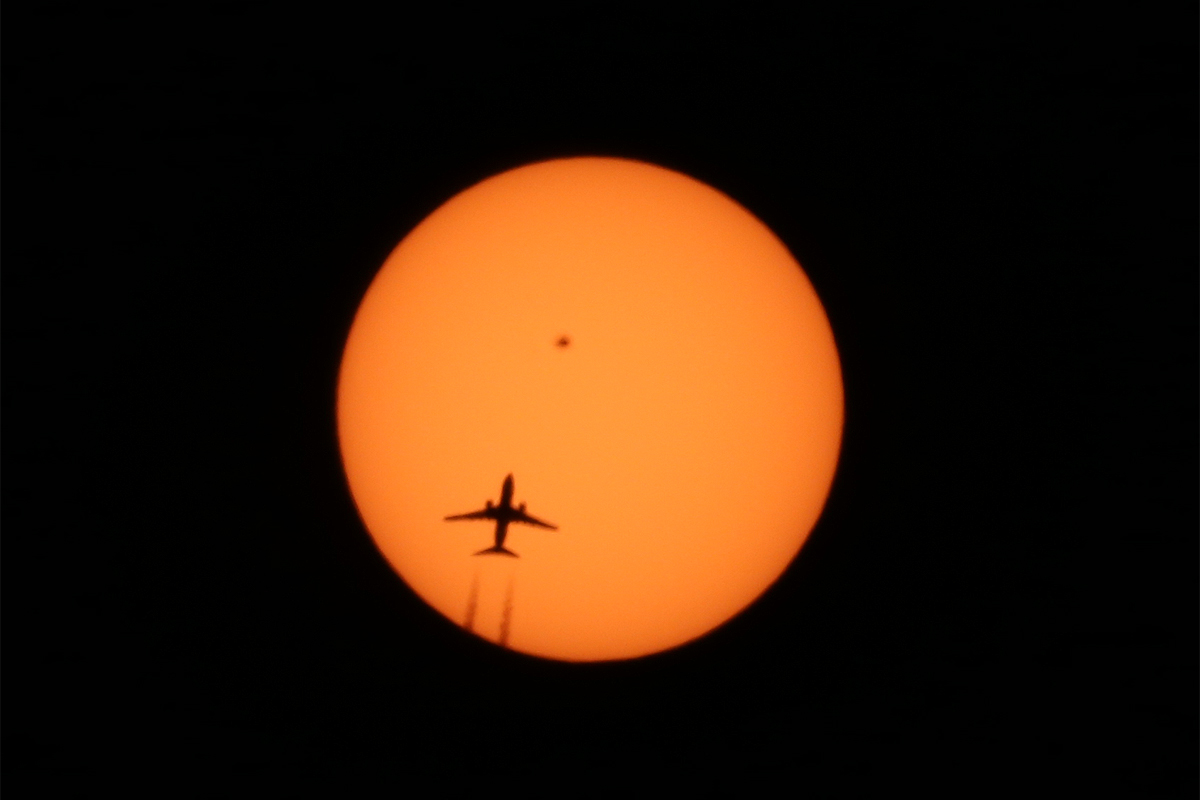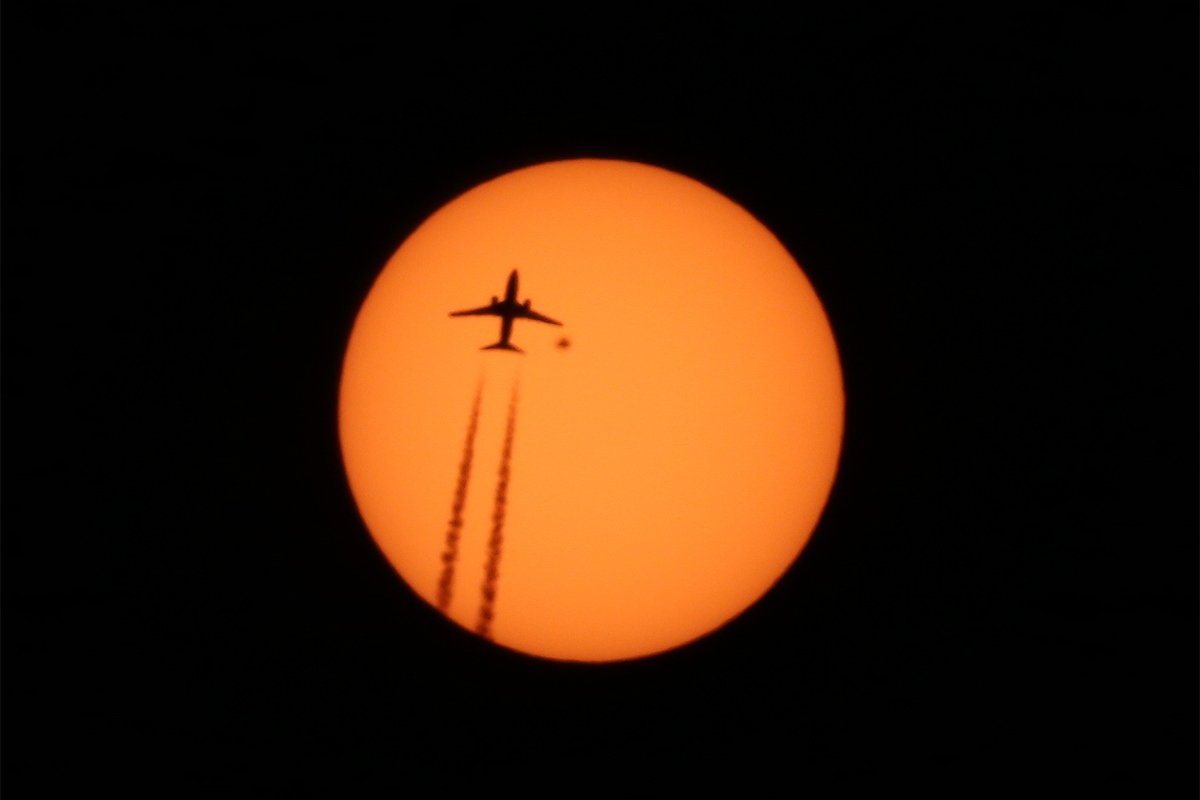Sun's Giant 'Heart' Sunspot Faces Earth in New Video, Photos

The sun gives us life, and it might even love us, too.
A huge, heart-shaped sunspot known as active region (AR) 2529 has rotated around to face Earth. AR 2529 is currently several times larger than our planet — big enough to be spotted by amateur astronomers here on Earth.
Indeed, AR 2529 is clearly visible in two amazing photos of an airplane crossing the sun's face that Alexander Krivenyshev of WorldTimeZone.com captured today (April 13) from his New York City apartment.
"Funny, as [I] saw that single plane far away over the horizon, I almost steer[ed] it with my mind to fly just in front of the sun," Krivenyshev told Space.com via email. "And it happened."
Warning: NEVER look directly at or photograph the sun unless you have the proper protective equipment. Serious and permanent eye damage can result.
Sunspots are dark patches on the surface of the sun that are a bit cooler than surrounding areas. As the term "active region" suggests, sunspots serve as launchpads for solar flares and coronal mass ejections (CMEs) — huge eruptions that send clouds of solar plasma racing into space at millions of miles per hour.
AR 2529 has been pretty quiet to date, though it did blast out a small CME on Sunday (April 10). That CME could sideswipe Earth's magnetic field sometime today, according to spaceweather.com.
Breaking space news, the latest updates on rocket launches, skywatching events and more!
Powerful CMEs that hit Earth squarely can wreak havoc here, sparking geomagnetic storms with the potential to temporarily disrupt satellite navigation, radio communications and power grids. Such storms also dramatically ramp up the beautiful, colorful aurora displays known as the northern and southern lights.
Such consequences are not expected from the recent AR 2529 CME. But researchers will keep an eye on the sunspot, just as they carefully track every active region that could send a CME rocketing toward Earth.
Follow Mike Wall on Twitter @michaeldwall and Google+. Follow us @Spacedotcom, Facebook or Google+. Originally published on Space.com.
Join our Space Forums to keep talking space on the latest missions, night sky and more! And if you have a news tip, correction or comment, let us know at: community@space.com.

Michael Wall is a Senior Space Writer with Space.com and joined the team in 2010. He primarily covers exoplanets, spaceflight and military space, but has been known to dabble in the space art beat. His book about the search for alien life, "Out There," was published on Nov. 13, 2018. Before becoming a science writer, Michael worked as a herpetologist and wildlife biologist. He has a Ph.D. in evolutionary biology from the University of Sydney, Australia, a bachelor's degree from the University of Arizona, and a graduate certificate in science writing from the University of California, Santa Cruz. To find out what his latest project is, you can follow Michael on Twitter.


